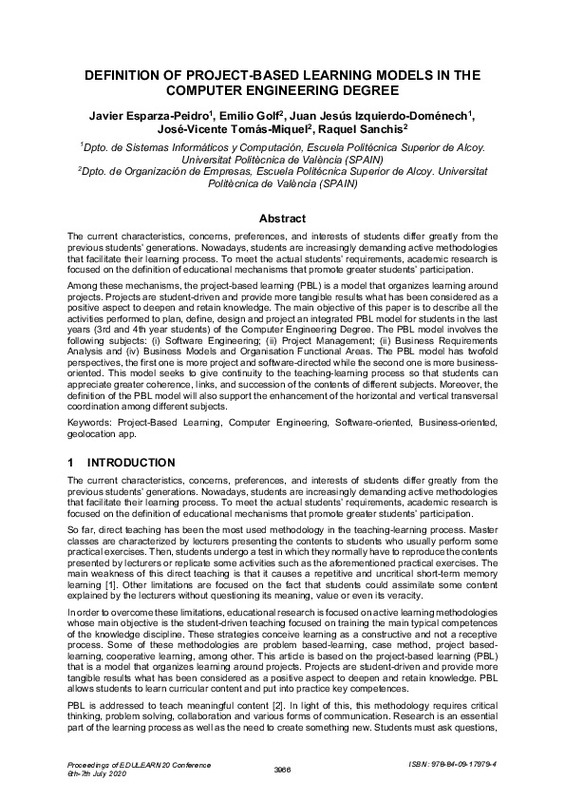JavaScript is disabled for your browser. Some features of this site may not work without it.
Buscar en RiuNet
Listar
Mi cuenta
Estadísticas
Ayuda RiuNet
Admin. UPV
Definition of Project-Based Learning Models in the Computer Engineering Degree
Mostrar el registro completo del ítem
Esparza Peidro, J.; Golf Laville, EJ.; Izquierdo-Doménech, JJ.; Tomas Miquel, JV.; Sanchis, R. (2020). Definition of Project-Based Learning Models in the Computer Engineering Degree. EDULEARN Proceedings (Internet). 3966-3972. https://doi.org/10.21125/edulearn.2020.1074
Por favor, use este identificador para citar o enlazar este ítem: http://hdl.handle.net/10251/159516
Ficheros en el ítem
Metadatos del ítem
| Título: | Definition of Project-Based Learning Models in the Computer Engineering Degree | |
| Autor: | ||
| Entidad UPV: |
|
|
| Fecha difusión: |
|
|
| Resumen: |
[EN] The current characteristics, concerns, preferences, and interests of students differ greatly from the previous students¿ generations. Nowadays, students are increasingly demanding active methodologies that facilitate ...[+]
|
|
| Palabras clave: |
|
|
| Derechos de uso: | Reserva de todos los derechos | |
| Fuente: |
|
|
| DOI: |
|
|
| Editorial: |
|
|
| Versión del editor: | https://doi.org/10.21125/edulearn.2020.1074 | |
| Título del congreso: |
|
|
| Lugar del congreso: |
|
|
| Fecha congreso: |
|
|
| Agradecimientos: |
This article has been supported by the Vice-rectorate for Digital Resources and Documentation
(Vicerrectorado de Recursos Digitales y Documentación) and Vice-Rectorate for Studies, Quality and
Accreditation (Vicerrectorado ...[+]
|
|
| Tipo: |
|









